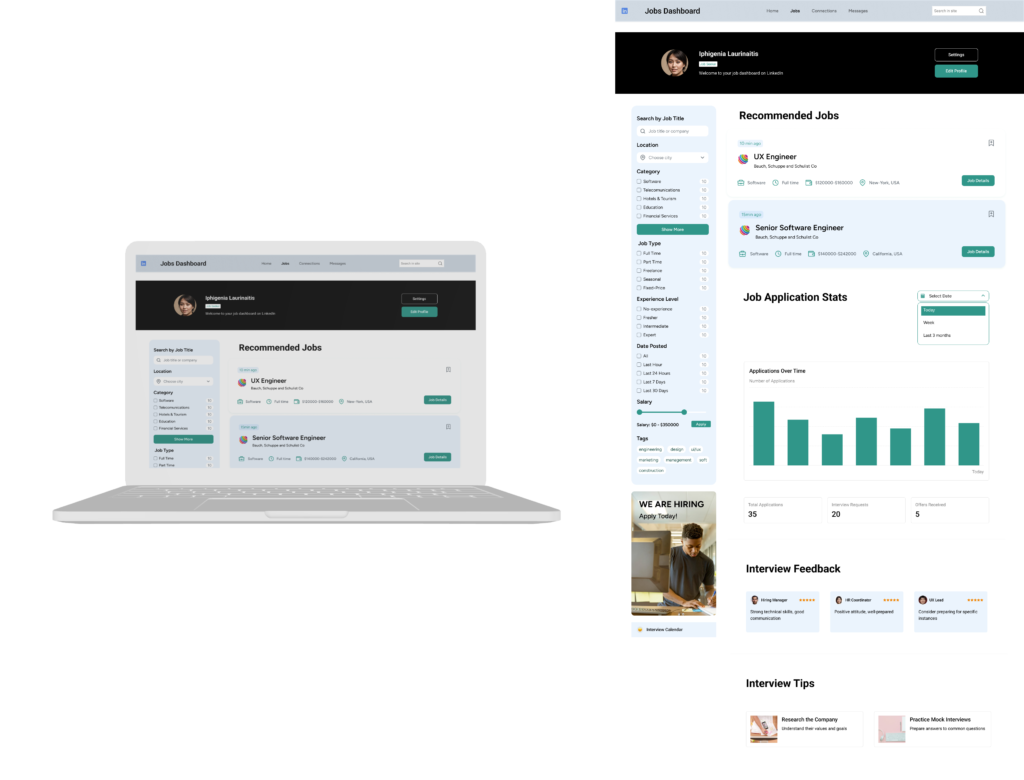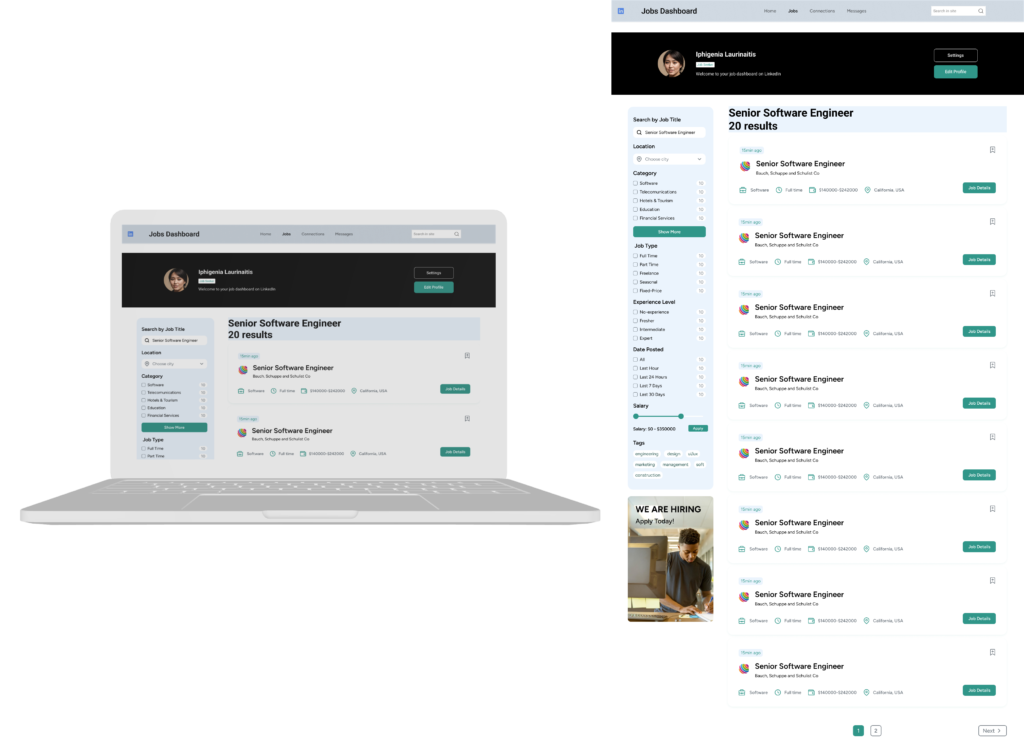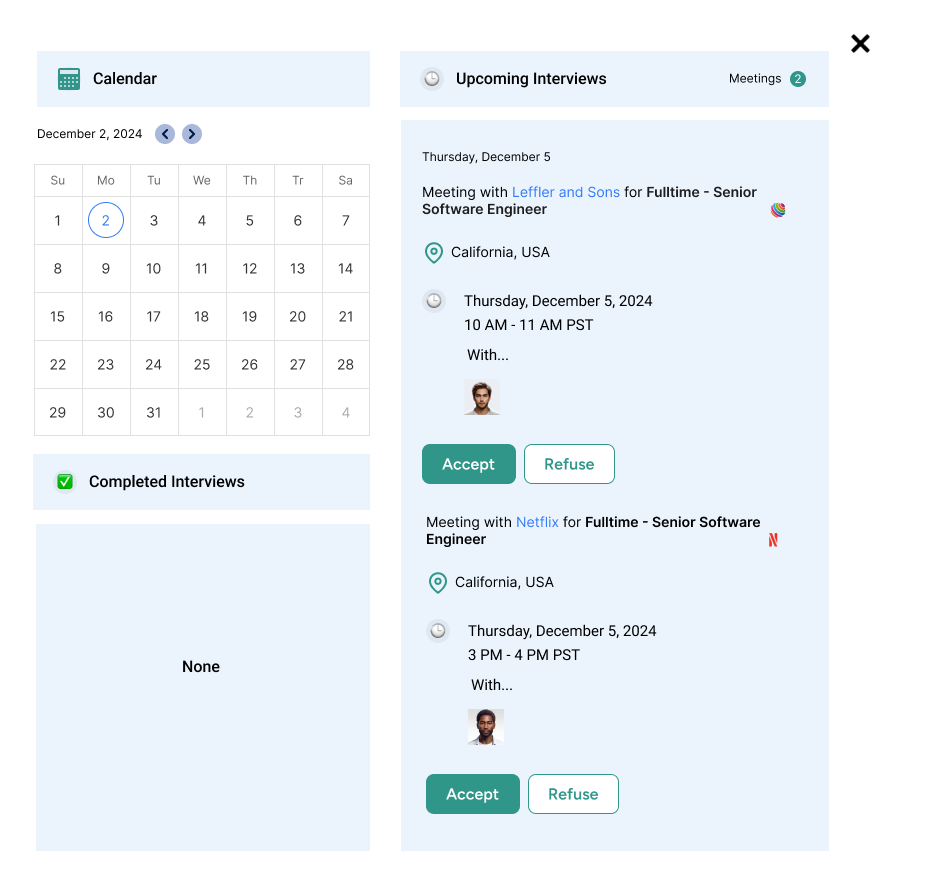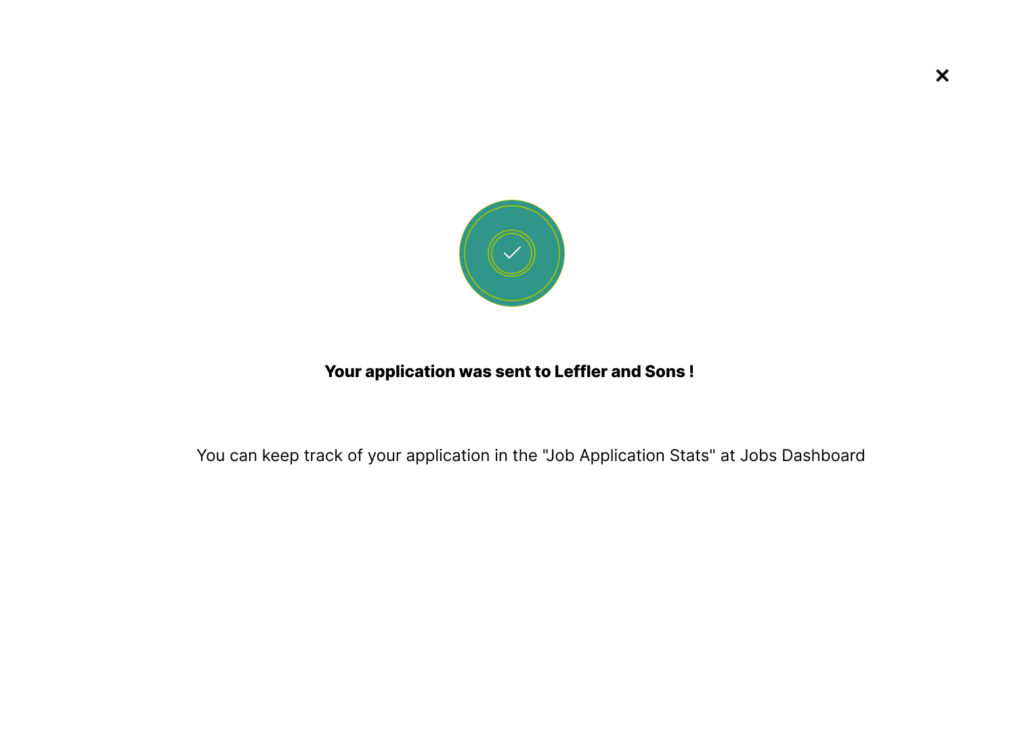LinkedIn Redesign
First Time Linkedin User Experience First Impressions
Initial Impressions:
- Clean and Professional Interface: LinkedIn generally presents a clean and professional interface, which aligns well with its professional networking purpose.
- Easy Sign-Up Process: The sign-up process is straightforward, often allowing users to sign up with their existing email or social media accounts.
- Clear Profile Creation Steps: The platform provides clear guidance on how to create a profile, including suggestions for a strong headline and summary
Potential Challenges for New Users:
- Overwhelming Features: The platform can be overwhelming for new users, with many features and functionalities.
- Networking Etiquette: Understanding the nuances of professional networking on LinkedIn can be challenging for newcomers.
- Job Search Complexity: Navigating the job search feature and understanding its nuances can be confusing
Improving the First-Time User Experience:
- Simplified Onboarding: A more streamlined onboarding process could help new users quickly understand the platform’s core features.
- Personalized Recommendations: AI-powered recommendations for connections, jobs, and groups can help users quickly find relevant content.
- Intuitive Interface: A more intuitive and visually appealing interface can enhance user engagement.
- Clear Guidance and Tutorials: Providing clear tips and tutorials can help users maximize the platform’s potential.
By addressing these potential challenges and focusing on a seamless user experience, LinkedIn can continue to attract and retain new users.
SWOT Analysis
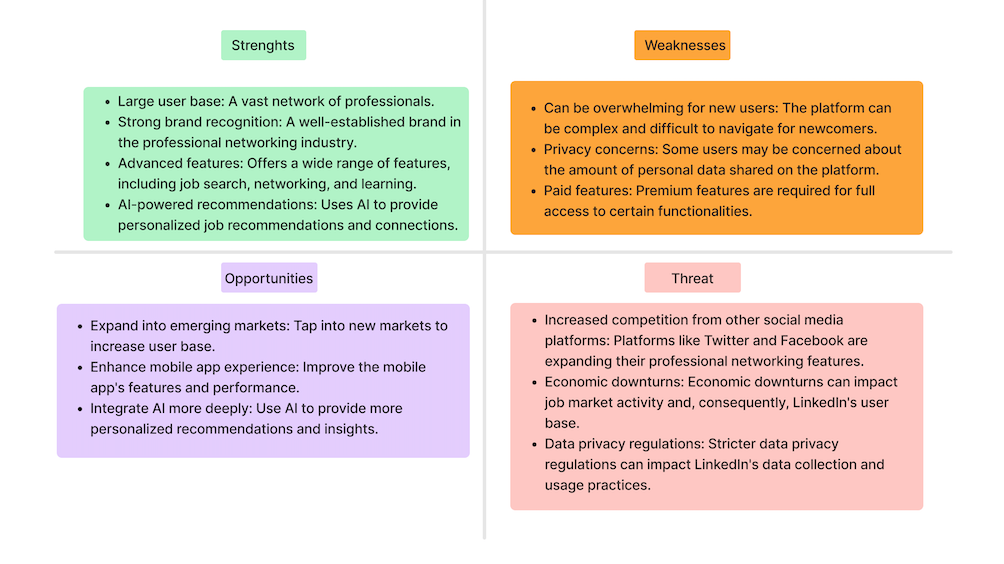
Gestalt Principles
Applying Gestalt Principles to Xing
Proximity
- Grouping related elements: Group similar elements, such as profile information, experience, and education, to create visual clarity and improve readability.
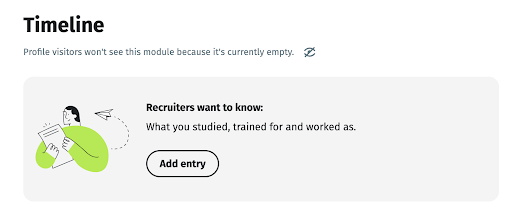
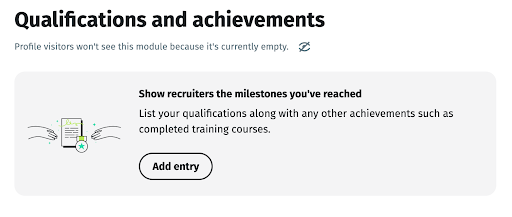
Spacing elements: Use consistent spacing between elements to create a sense of hierarchy and organization.
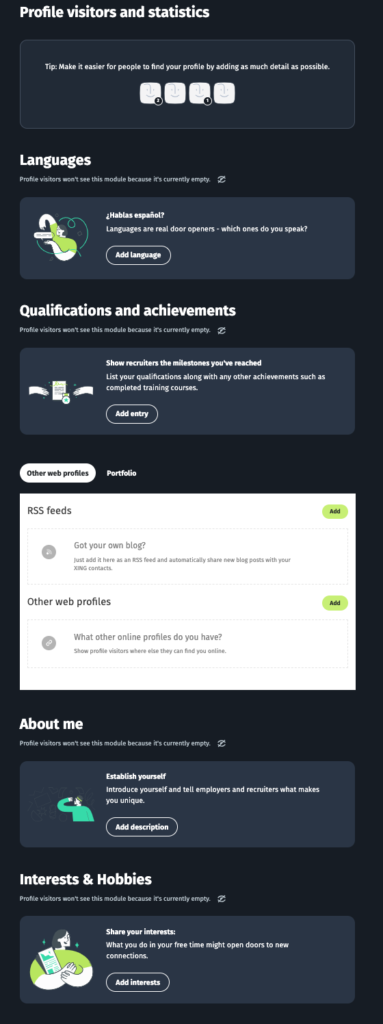
Similarity
- Consistent design elements: Use consistent typography, color schemes, and iconography throughout the platform to create a cohesive visual language.

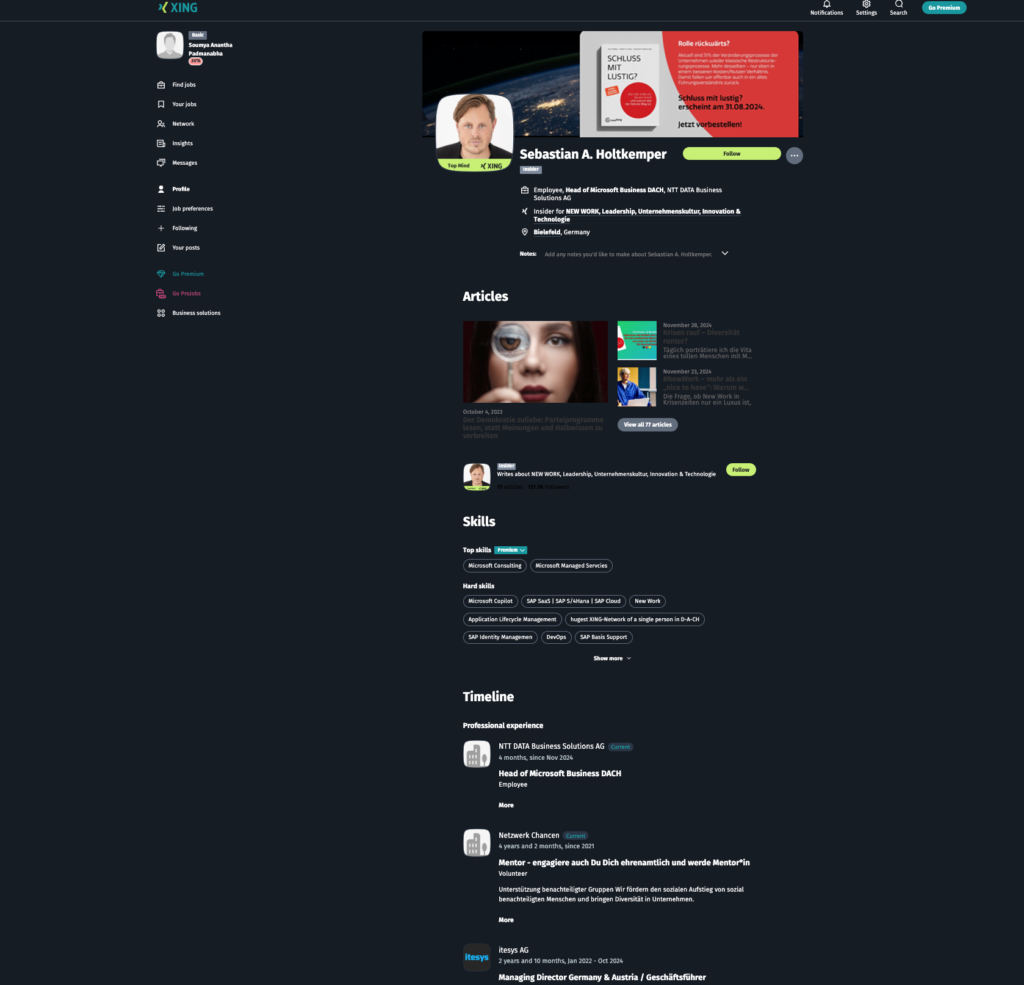
- Visual hierarchy: Use visual cues like font size, color, and bolding to prioritize important information.
Continuity
- Smooth transitions: Use smooth transitions between pages and sections to create a seamless user experience.
- Consistent navigation: Maintain a consistent navigation structure throughout the platform.
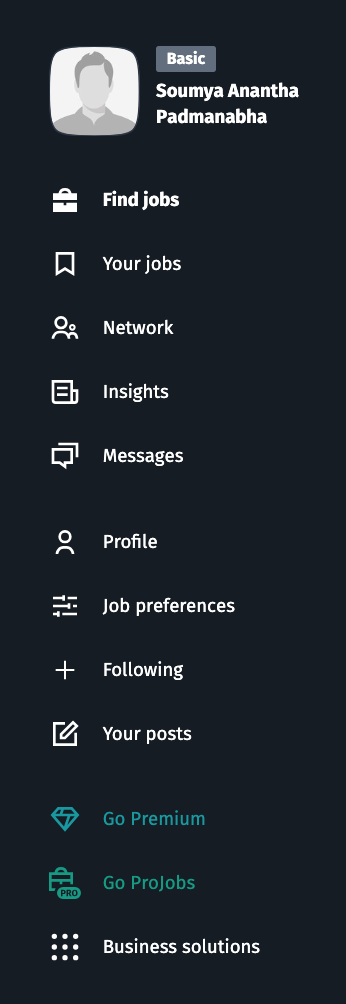
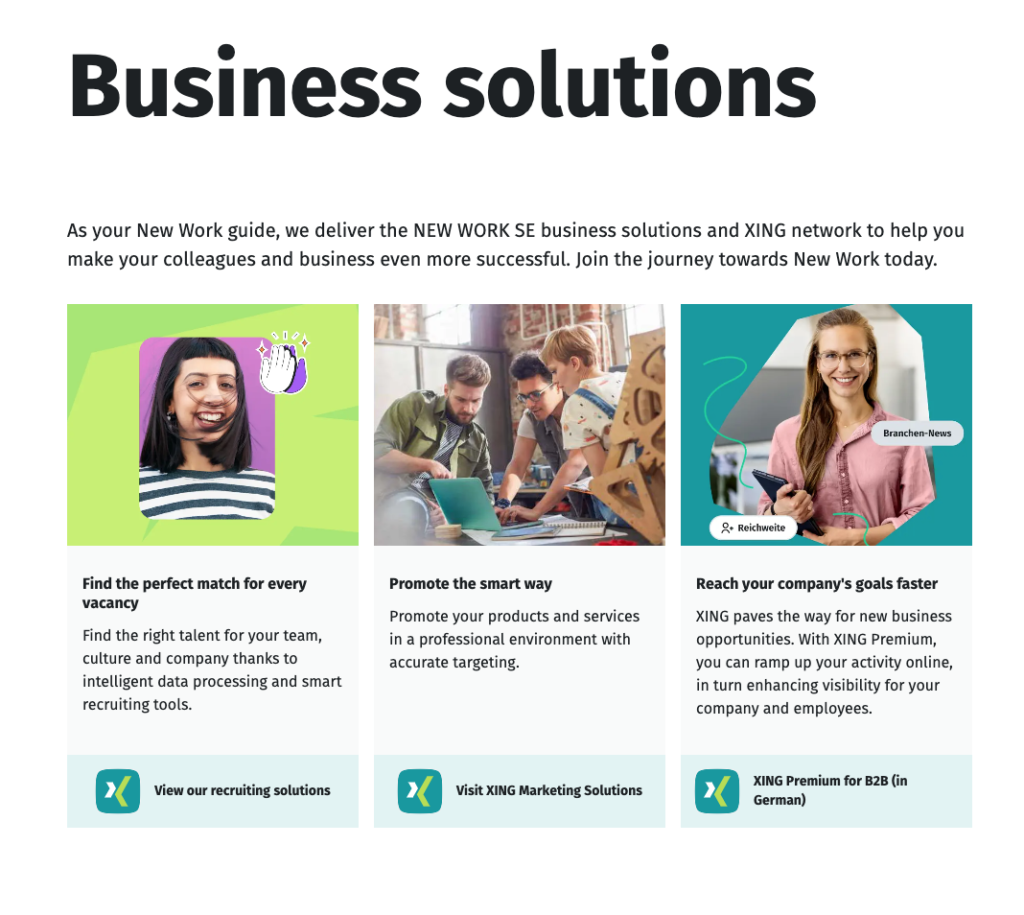
Closure
- Clear visual boundaries: Use clear visual boundaries to define different sections of the page.
- Complete shapes: Use shapes and patterns to create a sense of completeness and closure.
Figure-Ground
- Clear distinction between foreground and background: Use contrast and color to differentiate between important elements and the background.
- Focus on the primary content: Ensure that the primary content is easily identifiable and stands out from the rest of the page.
Applying Gestalt Principles to Indeed
Proximity
- Grouping Related Elements: Job listings are grouped together with clear visual dividers. This helps users quickly scan and identify relevant job opportunities.
- Consistent Spacing: Consistent spacing between elements like job titles, company names, and descriptions creates a clean and organized layout.
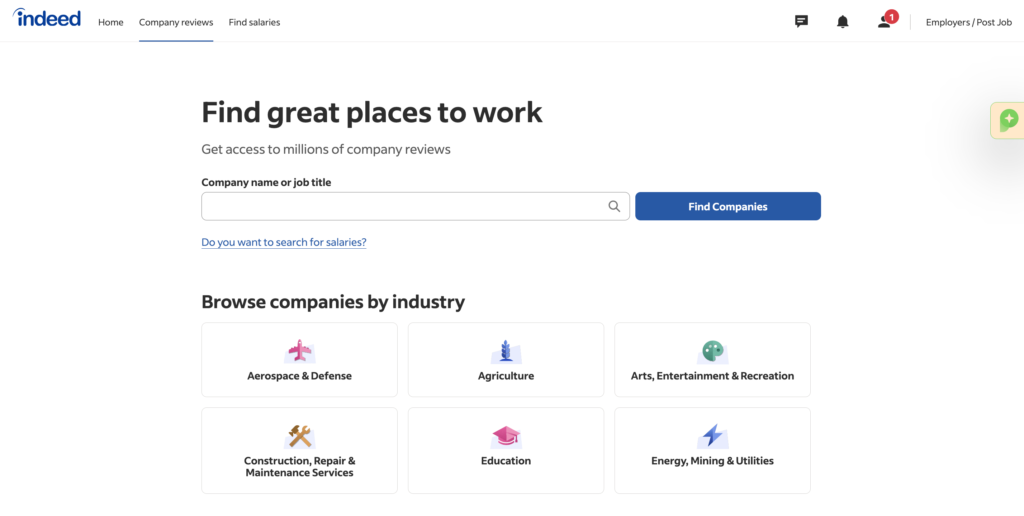
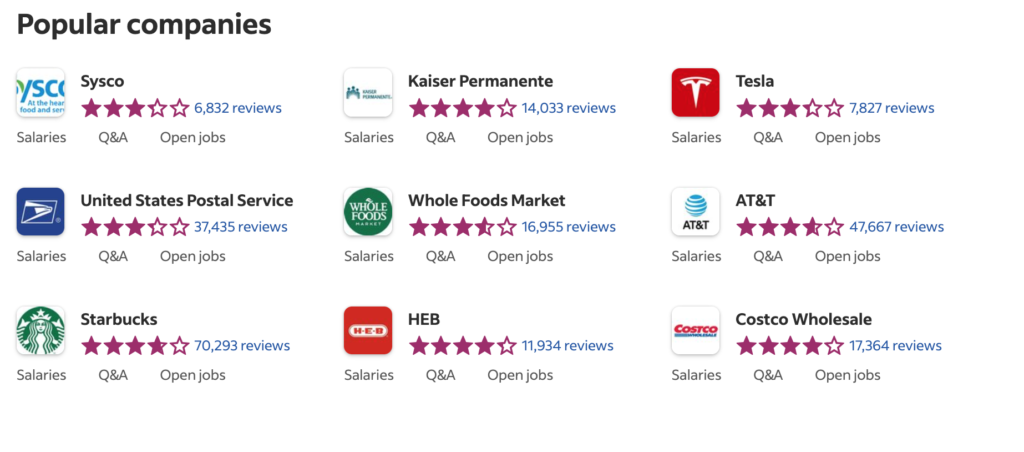
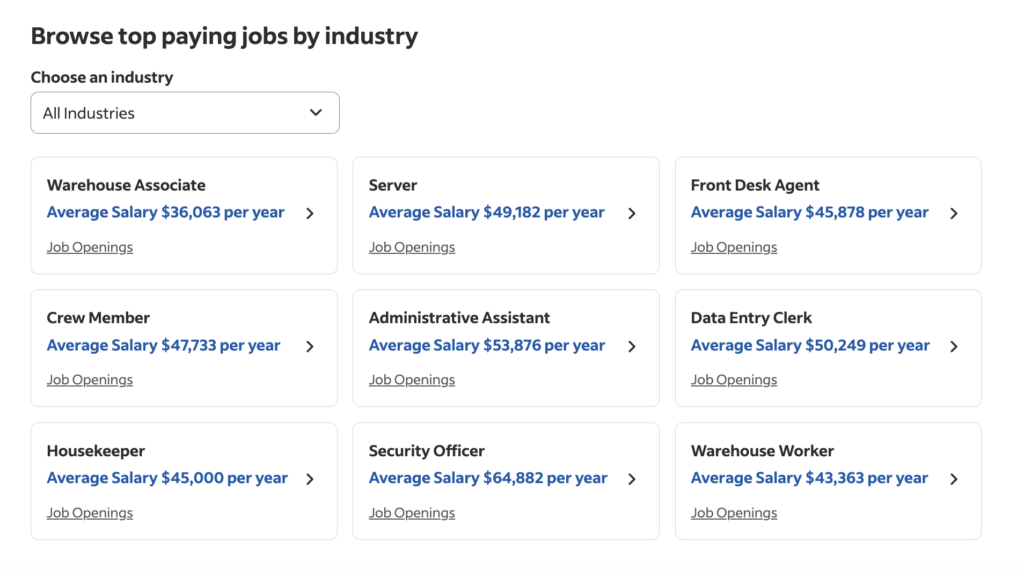
Similarity
- Consistent Typography: The use of a consistent font and font size throughout the page creates a unified visual experience.
- Similar Layout: Job listings have a similar layout, making it easier for users to scan and compare different opportunities.
Continuity
- Smooth Scrolling: The smooth scrolling experience ensures a seamless transition between different sections of the page.
- Consistent Navigation: The navigation bar remains consistent throughout the website, allowing users to easily navigate between different pages.
Closure
- Visual Boundaries: Clear visual boundaries, such as lines or color blocks, are used to separate different sections of the page.
- Complete Shapes: The use of rectangular shapes for job listings creates a sense of completeness and organization.
Figure-Ground
- Clear Focus: The job listings are the primary focus, with the background and other elements serving as supporting elements.
- Visual Hierarchy: The use of font size, color, and bolding helps to prioritize important information, such as job titles and company names
Mood Board
Color Palette:
- LinkedIn Blue: A vibrant yet professional blue that represents trust and reliability.
- Soft Grays: Clean, minimalistic backgrounds that don’t distract from content.
- Bright Accent Colors: Pops of green or orange for buttons, job posts, or action calls (symbolizing growth and new opportunities).
- Neutral Tones: For readability, such as dark grays or blacks for text.
Typography:
- Bold, Modern Sans-serif Fonts: These give a clean, professional look. Think fonts like Helvetica, Arial, Gotham or Roboto
- Hierarchy in Font Sizes: Clear differentiation between job titles, company names, and job descriptions for easy scanning.
Imagery:
- Professional Profile Images: A balanced mix of headshots and group photos, symbolizing networking and professional community.
- Office Settings & Workplaces: Modern, dynamic work environments that emphasize innovation, inclusivity, and collaboration.
- Diverse Teams: Showcase people from different demographics to reflect LinkedIn’s global and inclusive nature.
- Graphs/Charts: Representing career growth, skills, or analytics, implying the tools available on the platform to track progress.
UI/UX Elements:
- Search Bar: Centralized at the top, with filters like job type, location, and experience level.
- Cards for Job Listings: Clean, minimal design for job posts, with icons for company logos, job titles, and a short description.
- Navigation Bar: Clear, horizontal menu with icons for “Home,” “Jobs,” “Connections,” “Messages,” etc.
- Responsive Design: Mobile-friendly UI mockups with streamlined navigation.
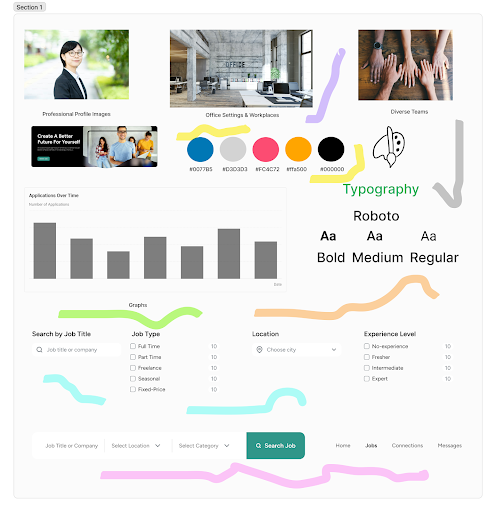
Blackhole
Many users find the LinkedIn job application process to be frustrating, time-consuming and inefficient for both job seekers and recruiters. Despite being a powerful platform for professional networking and job seeking, it often falls short in providing a seamless and efficient application experience.
People Affected:
- Lack of transparency in the application process with little to no feedback for applicants
- Difficulty tracking application and their status
- Job seekers may not be matched with the most relevant opportunities.
- If LinkedIn doesn’t improve its job application process, it may lose market share to other job boards and platforms.
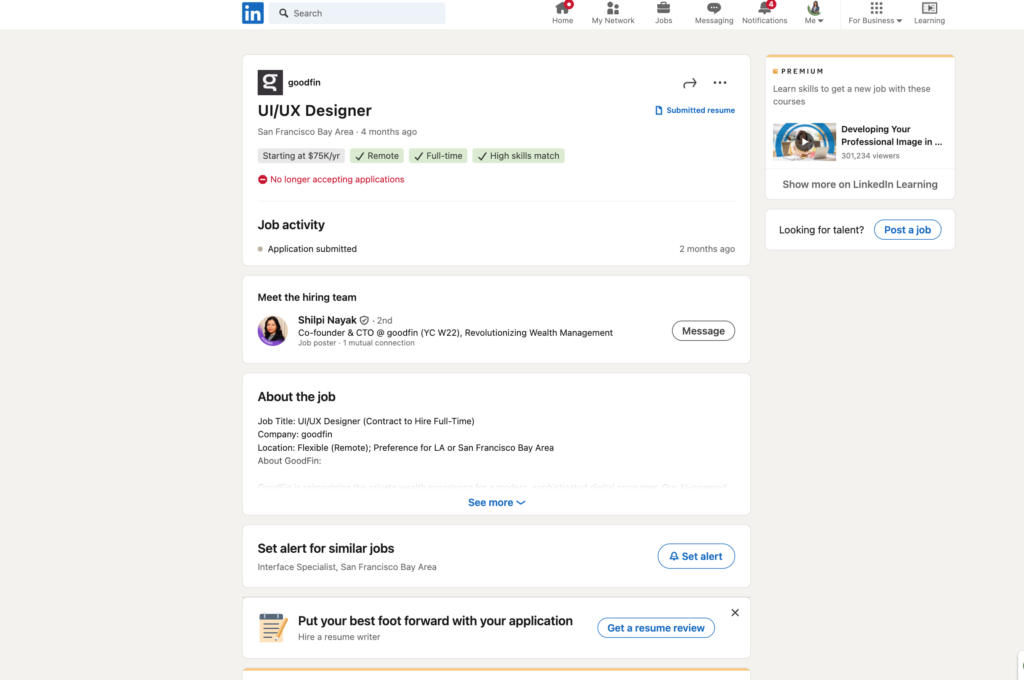
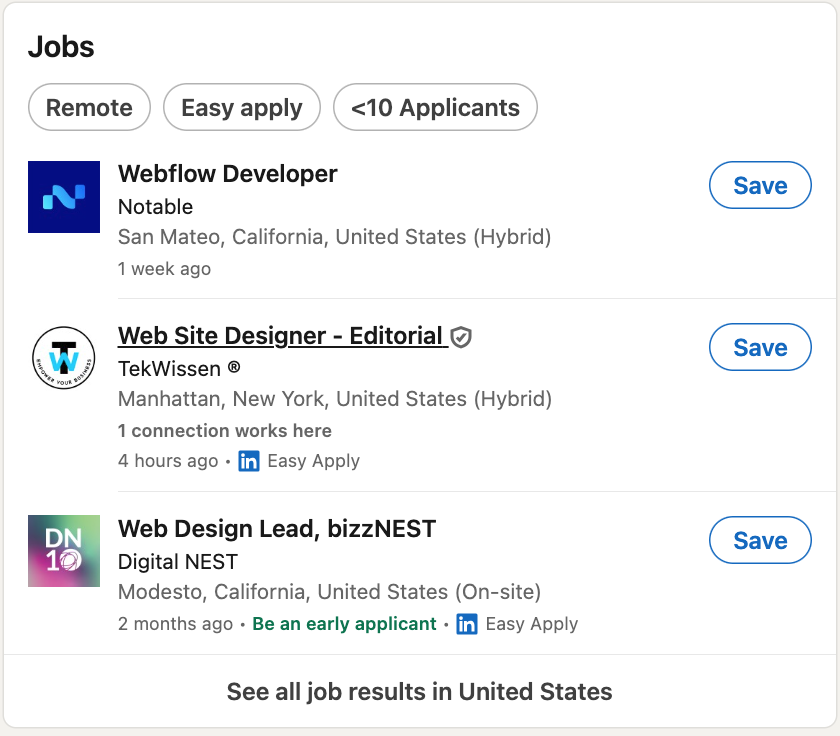
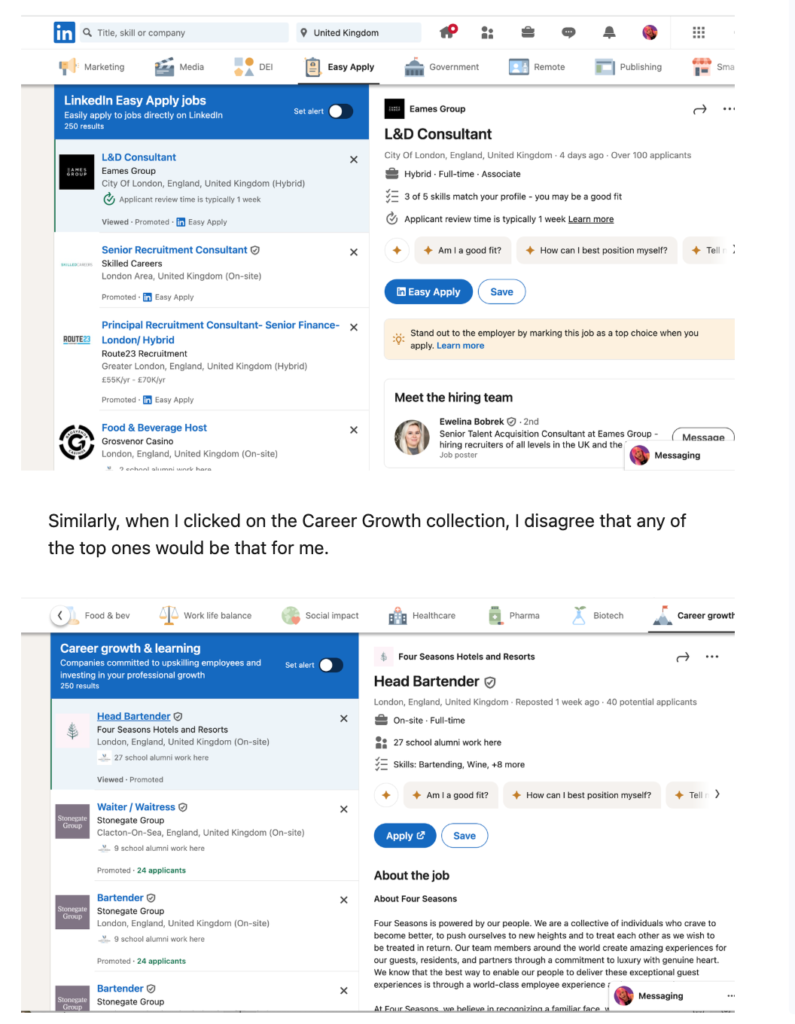
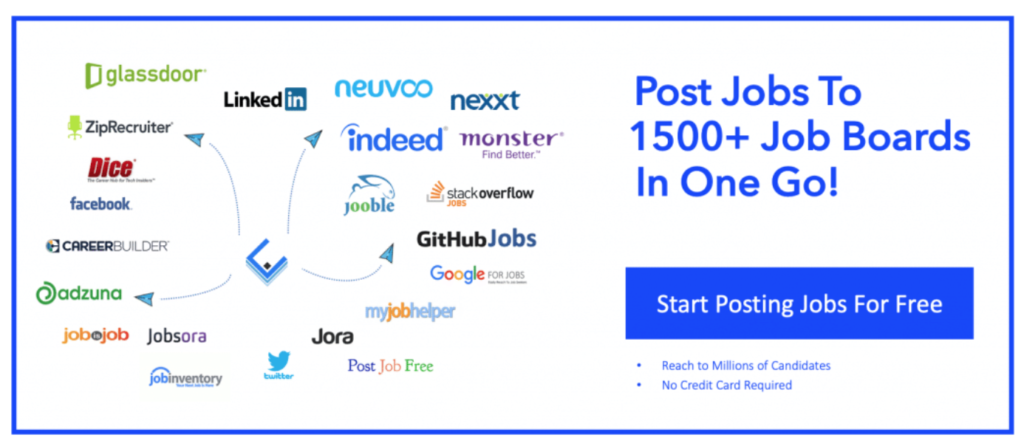
Personas
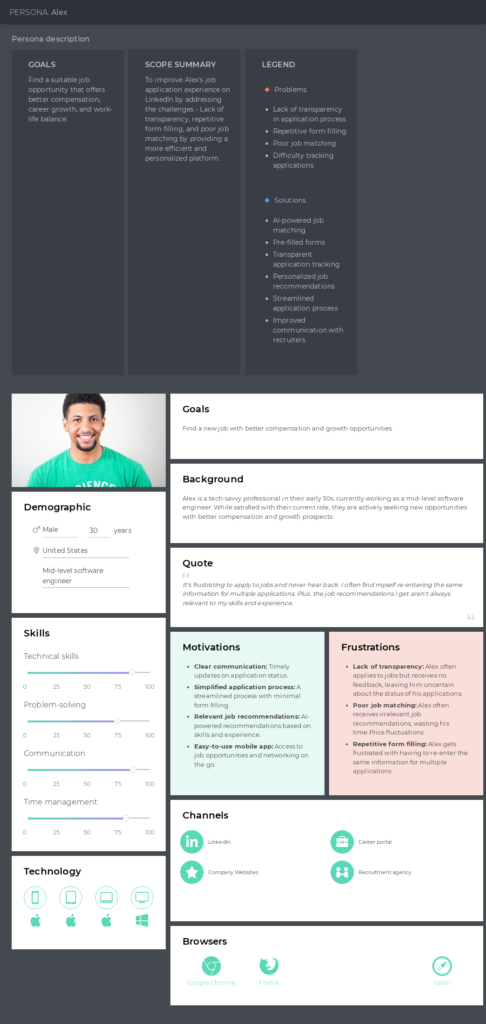
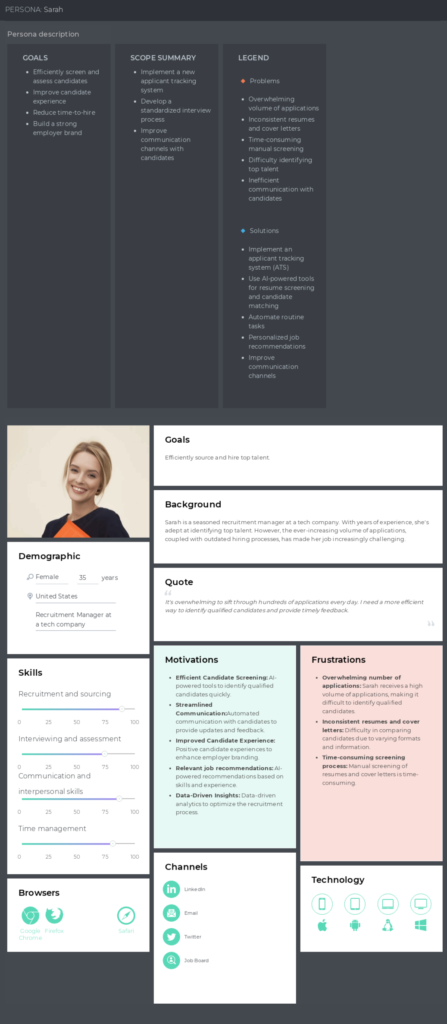
User Flow

User Interviews
User 1:
As a frequent user of LinkedIn for job applications, I’ve encountered a few pain points that could be improved:
- Inconsistent Application Processes:
- Multiple Platforms: Often, I’m redirected to a company’s specific application portal or a third-party platform, disrupting the seamless LinkedIn experience.
- Varying Requirements: Different companies have unique application formats, requiring me to constantly adapt and format my resume and cover letter.
- Lack of Transparency in the Application Process:
- Ghosting: It’s frustrating to apply for a job and receive no response, leaving applicants in the dark about their status.
- Limited Feedback: Even when rejected, applicants often receive generic or no feedback, hindering their ability to improve future applications.
- Inefficient Resume and Cover Letter Uploading:
- Manual Entry: While LinkedIn allows for easy profile updates, the process of uploading and formatting resumes and cover letters can be time-consuming.
- Limited Customization: The platform could offer more flexibility in customizing the appearance and formatting of uploaded documents.
- Difficulty in Tracking Applications:
- Poor Organization: It’s challenging to keep track of multiple applications, especially when dealing with different companies and job portals.
Lack of Notifications: Timely notifications about application status, interviews, or rejections would be helpful.
Potential Improvements:
- Unified Application Platform: A standardized application process across all companies, streamlining the experience for job seekers.
- Transparent Communication: Regular updates on application status, even if it’s a rejection, to provide closure and improve candidate experience.
- AI-Powered Resume and Cover Letter Matching: Using AI to automatically match resumes and cover letters to job requirements, saving time and effort for both applicants and recruiters.
- Personalized Job Recommendations: Leveraging AI to suggest relevant jobs based on a user’s profile, skills, and experience.
- Improved Search Functionality: Enhancing the job search algorithm to provide more accurate and relevant results.
- Community Features: Creating a platform for job seekers to connect, share experiences, and receive advice from industry professionals.
User 2:
- Overwhelming notification volume
- lengthy job application processes
- difficulty in standing out in a crowded network
- irrelevant content in the feed
- the need to constantly update profiles to remain visible
- feeling pressure to constantly post
- job position might be closed but the job post will still be available to job seekers
Potential Improvements:
- Content Filtering and Customization: Allow users to filter their feed based on industry, job type, skills, or other relevant criteria.
- Improved Search Functionality: Make it easier for users to find relevant jobs and connections using advanced search filters.
- Clearer Communication: Improve communication between job seekers and recruiters through the platform.
Wireframes
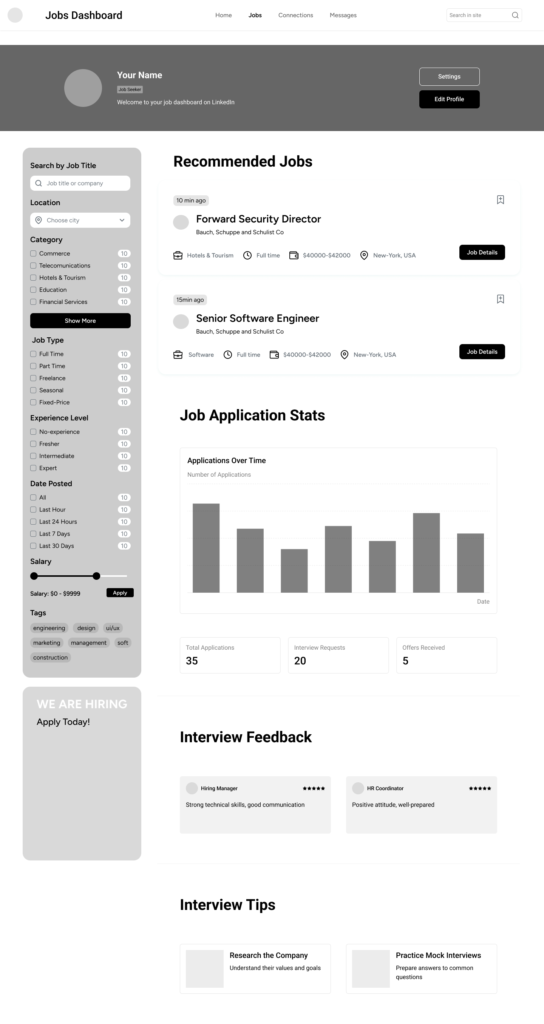
Personalized Recommendations: Recommended jobs tailored to their skills, experience, and interests save time and effort in searching. It surfaces opportunities they might otherwise miss.
Centralized Hub: A single dashboard provides a convenient overview of their job search progress, eliminating the need to navigate multiple pages or sections.
Application Stats: Tracking application status (applied, viewed, interviewed, etc.) provides valuable insights into the effectiveness of their job search strategy. It allows them to see where they’re having success and where they might need to adjust their approach.
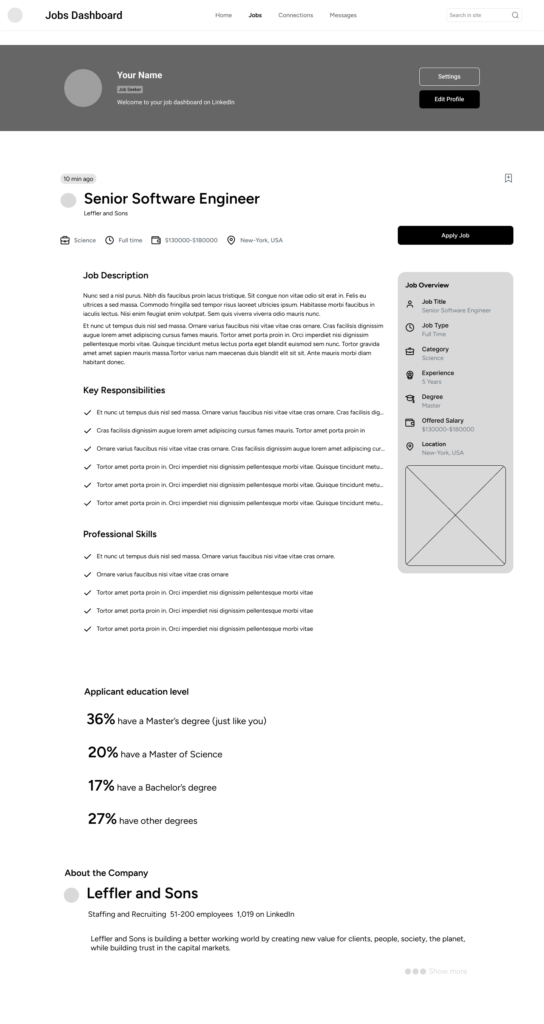
Job Description: Provides a clear understanding of the role’s responsibilities, tasks, and expectations. This helps job seekers assess if their skills and interests align with the position.
Education Level: Specifies the minimum education required, allowing job seekers to quickly determine if they meet the basic qualifications.
Company Information: Offers insights into the company’s mission, values, culture, and industry. This helps job seekers decide if the company is a good fit for their career goals and personal preferences.
Prototype
